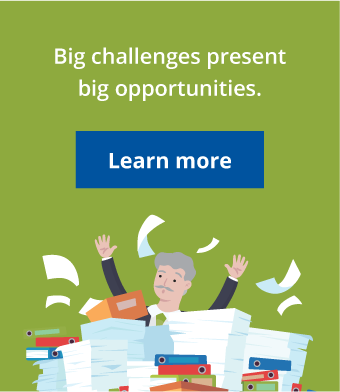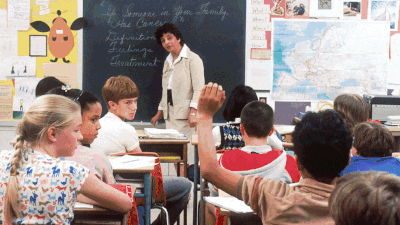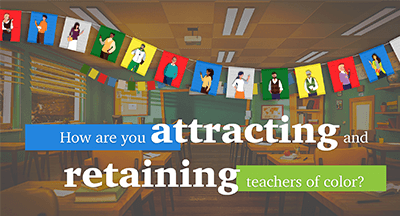Metacognition is the Superpower Students Need for the Future
#Achievement
Erin Werra
by
Erin Werra

|
Erin Werra Edtech Thought Leader |

|

|

|
 |
With any luck, humans will be shepherding AI’s burgeoning skills into a utopic, rather than dystopic, direction. And they’ll need a new set of skills to do so.
One among many uniquely human gifts that cannot be duplicated by AI: metacognition, or thinking about your own thinking. In fact, we need metacognition to train artificial intelligence. Here’s how schools can help students craft this invaluable skill.
What is metacognition?
Metacognition is the practice of thinking about your own thinking and learning. It is a complex skill involving feedback loops in the prefrontal cortex of the brain. To achieve metacognition, students must know themselves quite well and have a certain level of familiarity with learning strategies—not enough to be a pedagogical expert, but enough to know there are different strategies available along with the wherewithal to choose from tools in their mental toolbox.Metacognition can be learned, practiced, and refined over time.
Why practice metacognition?
The benefits of metacognition prime students for lifelong learning and can even compensate for IQ and knowledge (Swanson, 1990). Simply put, metacognition unlocks shortcuts to better learning for any student. By understanding the many ways they think and learn, people become better problem solvers. They make better decisions. And they have a greater self-concept. None of these skills are easily taught, but metacognitive skills behind them can be practiced.Examining one’s thought process can also bolster other cognitive abilities such as emotional intelligence and anti-bias. These types of skills are extremely expensive and time-consuming to try to teach on the job, which can give students a boost in future careers. Thinking about thinking primes kids for next-level and lifelong learning. It’s domain-agnostic and helps kids sharpen learning skills regardless of content.
Who can achieve metacognition?
By now, discerning educators may be envisioning their own populations and mentally sorting students into different levels of metacognition. It’s true, some students seem naturally primed for the curiosity, self-awareness, and reflection metacognition demands. Still, let’s double down on who can achieve this next-level thinking-about-thinking skill: it’s everyone.Metacognition has been studied in pigeons, rats, dogs, birds, and dolphins. Students are absolutely capable, even if they’re not used to it yet.
Adults across the district can brush up on metacognition alongside Professional Development sessions, during lesson planning, and as expert coaches for the mini-metacogniteurs. Finally, anyone who can learn and practice a new skill can develop metacognitive skills alongside it.
Challenges to achieving metacognition
Capability doesn’t equal automatic achievement though. Metacognition happens in our brains without us even noticing, so while we might be born learning, we’re certainly not used to zooming out to quantify the process.The process of examining our learning takes work, preparation, and practice. It demands students display a fairly complex level of self-awareness that can be hard for adolescents to access. And it is just plain tiring—a student might say it “hits different” than a typical serve-and-return, sit’n’get lecture style.
Since the process is fairly self-contained, documenting it is helpful to fulfill proof of mastery.
And there’s the pesky truth that prefrontal cortexes remain under construction until about 25 years of age—but that isn’t a magic finish line after which everything becomes clear, including why we can’t eat exclusively Flamin’ Hot Cheetos® and must consume the occasional carrot. Rest assured the partially developed pre-frontal cortex is capable of learning the ropes of examining its own processes.
Easy ways to achieve metacognition
Good news: students are probably already practicing thinking about thinking. If they’ve ever made and crossed off a checklist, wrote a reflection essay, or explained their work, they’re no stranger to metacognition.Checklists show students a framework for completing a task, breaking it up into smaller tasks that build to a final product. These feedback loops provide an onramp to higher-level reflection.
Rubrics show different levels of mastery and cognition. Offering credit for students examining process notes—which could be outlines, research notes, or previous drafts—can help students map their thinking process.
Defining and modeling multiple learning strategies offer students an intro to thinking tools they can eventually choose from. While students are often earmarked based on their natural or favored types of learning, any student can try out different methods.
Feedback, whether self-, peer-, or expert-provided, is crucial to refining skills over time. This is the cornerstone of metacognition as well. Students can get comfortable offering feedback on others’ work, and then practice self-evaluation: looking at their own work with a critical eye. The ability to give and accept feedback will pay dividends in future workplaces and classrooms.
Follow-up resource: Is generative AI safe?
Weigh the pros and cons and decide for yourself (and your district).

|
Erin Werra Edtech Thought Leader |
|
|

|

|

|
 |









